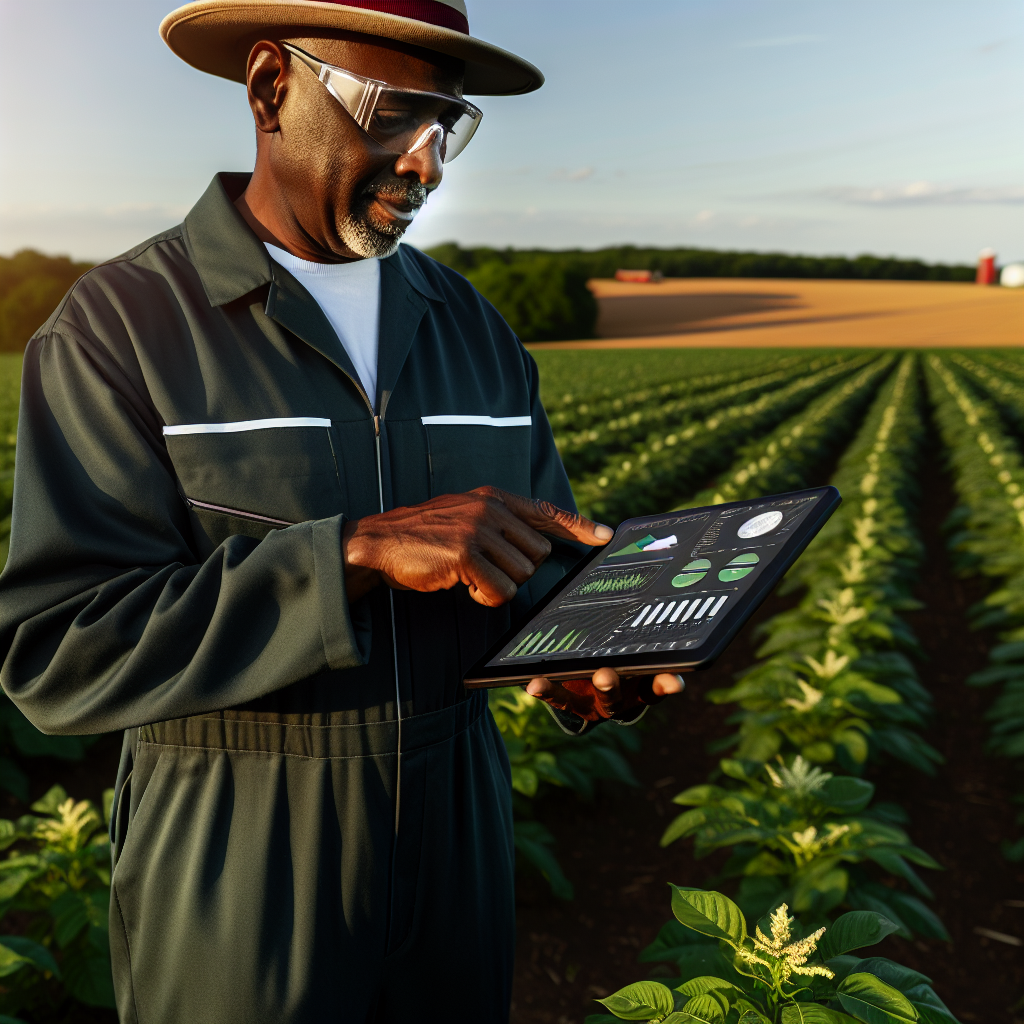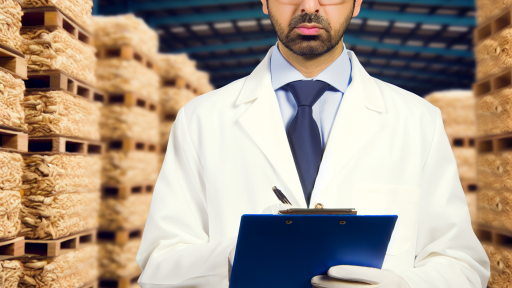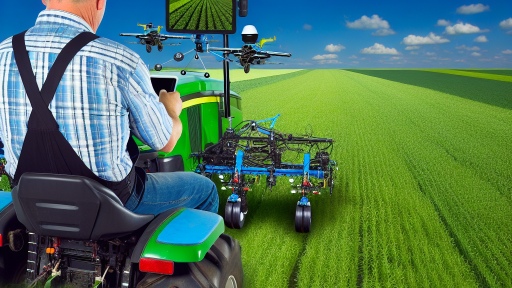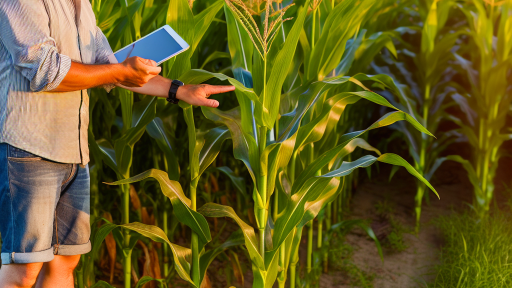Introduction to Sustainable Farming
Definition of Sustainable Farming
Sustainable farming refers to agricultural practices that meet current needs.
These practices ensure ecological balance and conserve resources for the future.
They integrate environmental health, economic profitability, and social equity.
Importance of Sustainable Farming
Sustainable farming plays a critical role in food security worldwide.
It addresses climate change, soil degradation, and water scarcity issues.
This approach helps maintain biodiversity and promote natural habitats.
Moreover, it enhances the resilience of farming systems to external shocks.
Beneficial Practices in Sustainable Agriculture
Crop rotation improves soil fertility and reduces pest buildup.
Organic farming techniques limit chemical pesticide and fertilizer use.
Agroforestry integrates trees with crops for improved ecosystem dynamics.
- Conservation tillage preserves soil structure and health.
- Cover cropping protects soil from erosion and retains nutrients.
- Integrated pest management reduces the need for chemicals.
Future of Sustainable Farming
Advances in technology support efficient resource management.
Precision agriculture allows for targeted use of inputs.
Farmers can use data-driven strategies to optimize yields sustainably.
Ultimately, sustainable farming can lead to a healthier planet.
Overview of Advanced Crop Monitoring Technologies
Introduction to Monitoring Technologies
Advanced crop monitoring technologies are transforming agriculture.
Transform Your Agribusiness
Unlock your farm's potential with expert advice tailored to your needs. Get actionable steps that drive real results.
Get StartedThese technologies enhance both crop yield and resource efficiency.
Farmers now employ various tools to optimize their farming practices.
Types of Monitoring Technologies
Remote sensing involves capturing data from a distance.
It utilizes drones and satellites for efficient monitoring.
This technology helps farmers assess crop health accurately.
Soil sensors measure moisture levels and nutrient concentrations.
They provide real-time data that is critical for decision-making.
Farmers can adjust their irrigation and fertilization accordingly.
Weather stations play a vital role in monitoring environmental conditions.
They collect data on temperature, humidity, and precipitation.
This information helps farmers anticipate weather-related challenges.
Benefits of Advanced Crop Monitoring
Using these technologies boosts crop yield significantly.
Additionally, they reduce the wastage of resources.
Farmers can optimize actions based on accurate data.
Cost savings also result from precise monitoring and management.
Consequently, farmers achieve greater productivity overall.
Moreover, these technologies promote sustainable agricultural practices.
Implementation Strategies
Integrating monitoring technologies requires careful planning.
Farmers should start by choosing appropriate tools based on needs.
Training staff on technology usage enhances efficiency.
Establishing a routine for data analysis is essential.
Regular assessments provide insights for continuous improvement.
Collaboration with agricultural experts can also aid implementation.
Future Trends in Crop Monitoring
The future of crop monitoring looks promising.
Showcase Your Farming Business
Publish your professional farming services profile on our blog for a one-time fee of $200 and reach a dedicated audience of farmers and agribusiness owners.
Publish Your ProfileEmerging technologies continue to shape agricultural practices.
Machine learning and AI will further enhance data processing.
These advancements will improve predictions and decision-making.
Farmers will likely adopt more automated solutions over time.
As technology evolves, sustainability becomes increasingly achievable.
Benefits of Utilizing Drones in Crop Monitoring
Enhanced Data Collection
Drones collect vast amounts of data quickly.
They provide high-resolution images and analytics.
This data helps farmers assess crop health efficiently.
Consequently, farmers can make timely decisions.
Cost Efficiency
Utilizing drones reduces the costs of manual monitoring.
Farmers save on labor and equipment expenses.
In addition, drones help lower operational costs over time.
They minimize the need for extensive ground surveys.
Improved Precision Agriculture
Drones enable targeted and precise application of inputs.
This reduces waste and enhances resource management.
After analyzing data, farmers apply fertilizers and pesticides accurately.
As a result, crop productivity increases significantly.
Timely Interventions
Quick access to aerial data allows immediate action.
Farmers can identify diseases or pest infestations swiftly.
Moreover, they can assess irrigation needs in real-time.
This leads to effective remedies and minimizes crop loss.
Environmental Monitoring
Drones assist in monitoring environmental conditions constantly.
They help assess soil conditions and moisture levels.
Additionally, drones can detect pollution and its sources.
This information supports sustainable farming practices.
Increased Crop Yield
Overall, utilizing drones enhances crop yield significantly.
Farmers achieve optimal growth conditions through better monitoring.
Consequently, an increase in profit follows from higher yields.
Investing in drone technology pays off in various ways.
Uncover the Details: Organic Amendments to Enhance Soil Quality
The Role of IoT Sensors in Sustainable Agriculture
Enhancing Precision Agriculture
IoT sensors significantly enhance precision agriculture practices.
They collect real-time data from the field.
This data includes soil moisture, temperature, and nutrient levels.
Farmers can make informed decisions based on accurate information.
Additionally, these insights improve crop yields and reduce waste.
Optimizing Resource Management
Resource management becomes more efficient through IoT technology.
Sensors monitor water usage and soil conditions regularly.
Farmers can optimize irrigation schedules based on real data.
This approach conserves water and minimizes unnecessary usage.
Moreover, it helps in applying fertilizers more effectively.
Showcase Your Farming Business
Publish your professional farming services profile on our blog for a one-time fee of $200 and reach a dedicated audience of farmers and agribusiness owners.
Publish Your ProfileReducing Environmental Impact
Integrating IoT sensors leads to a lower environmental footprint.
Farmers can identify exact needs of their crops.
This minimizes overuse of chemicals and fertilizers.
Consequently, it reduces runoff into nearby water sources.
This proactive management enhances soil health and biodiversity.
Supporting Sustainable Practices
IoT technology supports sustainable farming practices.
Farmers can track crop health and growth patterns easily.
They gain insights into pest infestations or diseases early.
Timely interventions lead to healthier crops and reduced losses.
Overall, sustainable practices benefit from continuous monitoring.
Economic Advantages
The use of IoT sensors provides economic benefits to farmers.
Improved efficiency leads to cost savings over time.
Higher yields translate into increased profits for farmers.
Additionally, sustainable practices attract premium prices.
Consumers increasingly prefer products grown with minimal environmental impact.
Find Out More: Harvest Timing Tips to Maximize Yield Quality
Data Analysis Techniques for Effective Crop Management
Introduction to Data Analysis in Agriculture
Data analysis is crucial for modern agriculture.
Farmers utilize various techniques to monitor crop performance.
This approach enhances decision-making in crop management.
Importance of Precision Agriculture
Precision agriculture focuses on optimizing field variability.
This technique improves resource efficiency significantly.
Consequently, farmers increase yields while reducing costs.
Additionally, it minimizes environmental impact.
Remote Sensing Technologies
Remote sensing plays a vital role in crop monitoring.
This technology captures data through satellite imagery.
Farmers can assess field conditions from a distance.
Moreover, it tracks changes in crop health over time.
Types of Remote Sensing
- Optical remote sensing provides visual data of crops.
- Thermal imaging detects temperature variations in fields.
- Multispectral imaging captures data across different wavelengths.
Data Analytics Software
Data analytics software transforms raw data into actionable insights.
Programs like Cropio and Ag Leader offer valuable tools.
These tools analyze various data types effectively.
Farmers can monitor weather, soil, and crop conditions.
Leveraging Machine Learning
Machine learning algorithms enhance predictive analytics in farming.
These algorithms identify patterns in large datasets.
Farmers can forecast crop yields with improved accuracy.
Furthermore, they can make proactive decisions based on predictions.
Implementing Decision Support Systems
Decision support systems integrate multiple data sources.
Such systems provide comprehensive insights for farmers.
These tools help optimize irrigation, fertilization, and pest control.
Farmers can improve overall productivity by using these systems.
Benefits of Advanced Data Analysis
Advanced data analysis contributes to sustainable farming practices.
Showcase Your Farming Business
Publish your professional farming services profile on our blog for a one-time fee of $200 and reach a dedicated audience of farmers and agribusiness owners.
Publish Your ProfileIt reduces input costs through efficient resource use.
Farmers can also enhance crop quality and yield.
Moreover, it aids in pest and disease management.
Case Studies
- Greenfield Farms improved yield by 15% using data analytics.
- Sunrise Ag Solutions reduced water usage by 20% with precision techniques.
- Blue Sky Agriculture enhanced pest control with machine learning insights.
The Future of Crop Management
As technology evolves, data analysis in farming will advance.
Innovations will lead to more efficient farming practices.
Farmers must adapt to stay competitive in the market.
Ultimately, the future of agriculture lies in effective data utilization.
Gain More Insights: Maximizing Yield in Organic Crop Production

Case Studies: Successful Implementations of Advanced Monitoring
Introduction to Case Studies
Advanced crop monitoring leads to substantial improvements in sustainable farming practices.
This section explores real-world examples of successful implementations.
Each case showcases unique technologies and their impacts.
Tech Innovations in Monitoring
Many farms are adopting precision agriculture technology.
These innovations involve remote sensing and IoT devices.
For example, sensors can collect data on soil moisture.
This data helps farmers make informed decisions on irrigation.
Case Study: GreenField Farms
GreenField Farms implemented drone technology to enhance crop monitoring.
Drones provide real-time aerial imagery of crop health.
This information allows for precise interventions when needed.
As a result, the farm reduced water usage by 30%.
Additionally, crop yields increased by 25%.
Case Study: EcoHarvest Corporation
EcoHarvest Corporation adopted a comprehensive soil monitoring system.
This system incorporates sensors that gather nutrient data.
Farmers receive alerts about nutrient deficiencies via their mobile app.
The approach leads to increased fertilizer efficiency.
Consequently, EcoHarvest reduced chemical application by 40%.
Community Impact
These advanced monitoring techniques foster community engagement.
Farmers share best practices and data insights with neighboring farms.
This collaboration enhances local sustainability efforts.
Moreover, it encourages the adoption of eco-friendly farming methods.
Future Prospects
The future of sustainable farming looks promising with technology.
As more farmers leverage advanced monitoring, they can optimize outputs.
Furthermore, continual improvements in technology will enhance data accuracy.
Ultimately, this trend will lead toward more resilient agricultural practices.
Discover More: Reducing Weeds Through Cover Cropping Strategies
Challenges and Limitations of Advanced Crop Monitoring Systems
High Initial Costs
Implementing advanced crop monitoring systems can require significant investment.
Many farmers may struggle to afford these initial costs.
For smaller farms, financial constraints can be especially daunting.
Technical Expertise Requirement
Advanced systems often demand a high level of technical knowledge.
Farmers may need training to effectively use these technologies.
Without proper training, potential benefits can diminish rapidly.
Showcase Your Farming Business
Publish your professional farming services profile on our blog for a one-time fee of $200 and reach a dedicated audience of farmers and agribusiness owners.
Publish Your ProfileData Overload
Crop monitoring systems generate vast amounts of data.
Many farmers may find it challenging to interpret this information accurately.
Consequently, valuable insights might be overlooked.
Dependent on Technology
Reliance on technology can lead to complications during malfunctions.
System failures can disrupt daily farming operations.
Moreover, connectivity issues can limit data access in remote areas.
Environmental Factors
Monitoring systems often face challenges due to environmental variables.
Extreme weather can impact sensor accuracy or functionality.
Further, differing soil types can affect data collection methods.
Privacy and Security Concerns
Data security remains a significant concern for farmers using these systems.
Unauthorized access to sensitive information can pose risks.
Hence, establishing robust security protocols is essential.
Integration with Existing Practices
Adapting advanced systems into traditional farming practices can be complex.
Farmers may face resistance to change from established routines.
Finding a balance between technology and tradition is crucial.
Future Trends in Sustainable Farming and Technology Integration
Emergence of Precision Agriculture
Precision agriculture revolutionizes farming practices.
Farmers utilize data analytics to enhance crop yields.
This technology focuses on site-specific management.
As a result, input usage becomes more efficient.
Advancements in Crop Monitoring Technologies
New technology improves crop health assessments.
Remote sensing devices gather crucial data remotely.
Drones provide real-time insights into field conditions.
Moreover, soil sensors monitor moisture and nutrient levels.
Integration of Artificial Intelligence
Artificial intelligence streamlines decision-making processes.
Farmers leverage AI for predictive analytics.
This capability helps in forecasting crop performance.
AI improves pest and disease management strategies.
Development of Sustainable Practices
Implementing cover crops enhances soil health.
Crop rotation minimizes pest pressure considerably.
Additionally, conservation tillage preserves soil structure.
These practices align with sustainable farming goals.
Collaboration Among Agriculture Stakeholders
Joint efforts strengthen the sustainable farming movement.
Farmers collaborate with agronomists for better strategies.
Research institutions provide valuable insights and data.
Policy makers create supportive frameworks for innovation.
Additional Resources
Agriculture Innovation: 10 Tech Trends to Watch in 2023 …
EOSDA Crop Monitoring: Farm Software For Agricultural Sector




